First, watch this 5-minute video because being able to visualize the process is important:
1. Canning jars
http://www.amazon.com/67000-Ball-Mason-Jar-12-pack/dp/B000BWZ7QO/ ($13 for 12)
2. Canning kit (bath, rack, funnel, jar lifter, lid lifter, bubble remover)
http://www.amazon.com/Ball-Waterbath-Including-Chrome-Plated-4-Piece/dp/B00212IHBY/ ($48)
3. Vegetables
Cucumbers with blossom ends cut off or any crisp vegetable (e.g. green beans, cauliflower, carrots, radish, bell peppers, shallots, onions, asparagus)
4. Spices
To taste - fennel, chili peppers, dill, dill seed, slightly crushed garlic cloves, coriander, bay leaves, cloves, "pickling spice", black peppercorn, mustard seed, wasabi powder, soy sauce, sugar
5. Brine
Water, plain sea salt (not iodized), 5% acidity vinegar
6. Other
Ladle and another nonreactive pot for brine
1. In the nonreactive pot (clay, enamel, glass, stainless steel), boil 4 cups of white vinegar, 4 cups of water, 1/2 cup sugar, 1/4 cup salt, to make the brine
2. In the canning bath, place rack at the bottom, fill with water, and boil
1. Boil the jars and lids in water for 15 minutes to sterilize
2. Put jar lids into a bowl and ladle boiling water on top of them to keep them hot
3. Pack jars tightly with large vegetables, then small vegetables, then spices
4. Ladle hot brine into jars using the funnel
5. Fill only up to the lowest thread ridge, or the jar may not seal
6. Remove air bubbles with a chopstick or bubble remover
1. Wipe the rim of residue that may keep the jar from sealing
2. Use magnetic lid lifter to take a hot lid from the bowl and press gently on top of the jar
3. Screw ring onto the jar until it's finger-tip tight (not too tight or air won't be able to escape)
4. Use jar lifter to place jars in boiling water in the canning bath, water covering them by 2 inches
5. After 10 minutes, starting count at full boil, remove jars with jar lifter
6. Store in refrigerator. Jars should vacuum-seal within 24 hours - lid tops should revert to "unpopped."
1. Wait 1-2 weeks to open and eat
2. You can reuse the brine to make more pickles, though you should remove any fresh spice that was used. Or you can drink the brine as part of a pickleback (http://en.wikipedia.org/wiki/Pickleback) or hangover cure (http://marlomc.wordpress.com/2009/06/26/pickle-juice/).
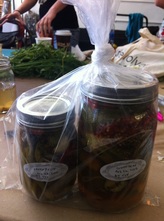

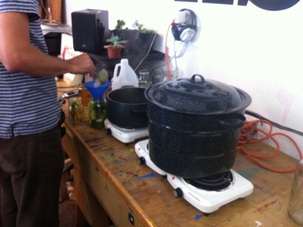
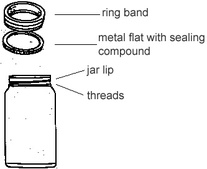
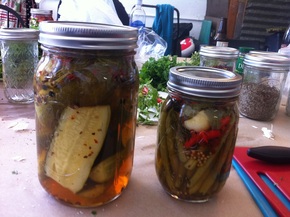
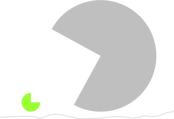
 RSS Feed
RSS Feed